How do I create a circle with a cut through it using CSS and an image in it? An example of what I want is shown below.Need a crossbrowser solution and with css not html.

How do I create a circle with a cut through it using CSS and an image in it? An example of what I want is shown below.Need a crossbrowser solution and with css not html.

You can do this by creating the circle using a pseudo-element and then skewing the container with overflow: hidden.
The child pseudo-element is reverse skewed to make it appear as though it is not skewed at all.
.shape {
position: relative;
height: 100px;
width: 120px;
overflow: hidden;
-webkit-transform: skew(-45deg);
-moz-transform: skew(-45deg);
transform: skew(-45deg);
}
.shape:after {
position: absolute;
content: '';
top: 0px;
left: 0px;
height: 100px;
width: 100px;
background: black;
border-radius: 50%;
-webkit-transform: skew(45deg);
-moz-transform: skew(45deg);
transform: skew(45deg);
}<div class="shape"></div>I have another solution, this one also uses SVG, but is cross browser compatible as OP needed:
See this Fiddle
you dont need any CSS and just requires three lines of html
<svg >
<circle cx="50" cy="50" r="50" clip-path="url(#cut-off-bottom)" />
<polygon points="0,0 40,0 0,50" style="fill:white;" />
</svg>Edit: Another thing I would like to add in, you can also show image inside the svg
<svg>
<pattern id="img1" patternUnits="userSpaceOnUse" width="200" height="200">
<image xlink:href="http://images.visitcanberra.com.au/images/canberra_hero_image.jpg" x="0" y="-50" width="200" height="200" />
</pattern>
<circle cx="50" cy="50" r="50" fill="url(#img1)" />
<polygon points="0,0 40,0 0,50" style="fill:white;" />
</svg>And again, you don't even need css for that, and also it is highly cross browser compatible.
A little different approach using SVG
You can use svg to draw a clipped circle and then rotate it.
fiddle: http://jsfiddle.net/j66xt2so/
svg{-webkit-transform: rotate(135deg);
-moz-transform: rotate(135deg);
transform: rotate(135deg);
}<svg >
<defs>
<clipPath id="cut-off-bottom">
<rect x="0" y="0" width="200" height="100" />
</clipPath>
</defs>
<circle cx="100" cy="70" r="50" clip-path="url(#cut-off-bottom)" />
</svg>The gradient background is a work around a strange behaviour of overflow:hidden
Sett the border-radius:100%; to all ways get a circular.
added an :after to add the content we need to cancel out the part we don't want.
.cut {
overflow: hidden;
width: 100px;
height: 100px;
border-radius: 100%;
background: -moz-radial-gradient(center, ellipse cover, #000 0%, #000 1%, #000 95%, rgba(0, 0, 0, 0) 100%);
background: -webkit-radial-gradient(center, ellipse cover, #000 0%, #000 1%, #000 95%, rgba(0, 0, 0, 0) 100%);
background: -ms-radial-gradient(center, ellipse cover, #000 0%, #000 1%, #000 95%, rgba(0, 0, 0, 0) 100%);
background: radial-gradient(ellipse at center, #000 0, #000 48px, transparent 49px);
}
.cut:after {
transform: rotate(-60deg) translate(-25px, -20px);
display: block;
content: "";
height: 30px;
width: 100px;
background-color: white;
}<div class="cut"></div>